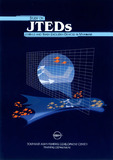Study on Juvenile and Trash Excluder Devices (JTEDs) in Myanmar
Share
抄録
The SEAFDEC Training Department, in cooperation with the Department of Fisheries, Myanmar conducted experiments on Juvenile and Trash Excluder Devices in Myanmar. The objective of the experiment is to compare the efficiency for catch and release of juvenile and trash fishes using different escape openings of JTEDs. The rigid sorting grid with a bar space of 1, 2 and 3 cm was operated at 5 stations each. The window shaped JTED and semi-curved JTED were operated at 4 stations and 3 stations, respectively. There were a total of 22 operations.
The CPUE of the fish trawl net operated in Myanmar waters was 99.75 kg/hr/haul. The escape rate of the trawl net catches using the rigid sorting grid JTEDs with 1, 2, 3-cm bar spacing, the window shaped and semi-curved JTEDs was 30.39, 31.26, 92.62, 8.43 and 9.87%, respectively. However, some large fish could escape the rigid sorting grid with bar spacing of 2 and 3 cm, window shaped and semi-curved JTEDs. The groups of escaped catches were trash fish, demersal fish, pelagic fish and cephalopod with escape rate of 43.49, 41.05, 10.24 and 5.22%, respectively. The major species of commercial-demersal catch that escaped from all JTEDs was Saurida tumbil and followed by Nemipterus sp. and Upeneus sp. Nemipterus sp. The size of the escaped species caught in cod-end was larger than those caught in cover net.
Suggested Citation
Chokesanguan, B., Ananpongsuk, S., Ae, K. M., Ko, W. K., & Yingyuad, W. (2007). Study on juvenile and trash excluder devices (JTEDs) in Myanmar. Samut Prakan, Thailand: Training Department, Southeast Asian Fisheries Development Center.

